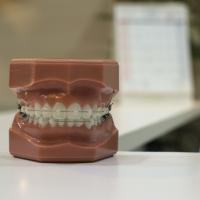Home > Blog > Cosmetic Surgery
Breast Implants: Saline vs. Silicone in 2012
Once the initial decision is made to undergo breast implant surgery, another essential choice arises that can affect a woman for the rest of her life: silicone or saline?
Silicone and Saline Similarities
As one might think, these two substances can be dramatically different, it is beneficial to first uncover how similar they really are. Both implant options have a silicone outer shell. Also, both adequately increase a woman's breast size and are safe to use for cosmetic and functional purposes. An initial incision must be made for the placement of each, though the size of the incision varies. Yet, these implant types are vastly different.
Saline Implants
Saline implants are filled with a saline solution that is safe upon entrance into the human body. Since saline is a naturally-occurring fluid within body, many patients feel safer with this option. These implants are usually filled with the solution at the time of surgery, so a smaller incision is available with this type of implant. Although they have been criticized for having a hard or unnatural feeling, surgical techniques and improved placement methods have discouraged these complaints. Saline implants are available for women 18 years of age or over for breast augmentation or for women of any age in regard to breast reconstruction. However, this is not the case for silicone implants.
Silicone Implants
In opposition to their saline-based relatives, silicone implants are only available to women who are 22 years of age or older when used for breast augmentation. They are pre-filled with silicone, which is a thick, sticky fluid that mimics the texture and movement of human fat. Since they are pre-filled, they often require a larger incision so that the implant fits through the initial breast tissue. Many patients feel that they more closely resemble natural breast tissue.
Similarities in Risk
Interestingly enough, the risks of this procedure are similar for both silicone and saline implants. Breast pain, infection, and changes in nipple or breast sensation that can be permanent are areas of concern. A breast augmentation can also encourage the development of scar tissue that compromises the shape of the breast tissue. This occurrence is known as capsular contracture and can require additional breast surgery. Implant leakage and rupture is also possible, although saline implants make this occurrence more easily detectable.
Best Type of Implant
Each patient has to make the best decision for their own body. Breast augmentations are often sought out to increase breast size and improve self-confidence. Either type of implant will meet these initial patient desires and goals.
Peter Wendt does his writing and research from his home in Austin, TX. He recommends you visit the plastic surgeons at the American Institute for Plastic Surgery for your breast implants.
More to Read:
Previous Posts:






